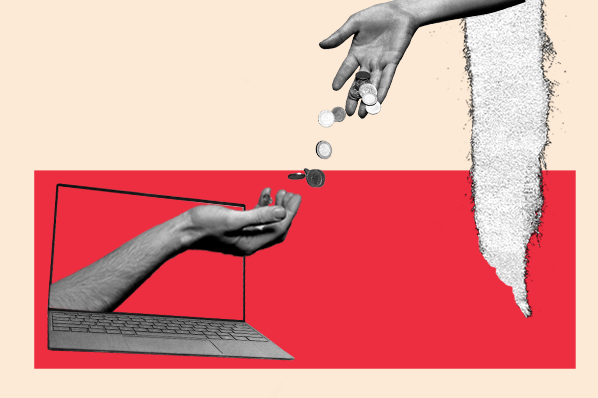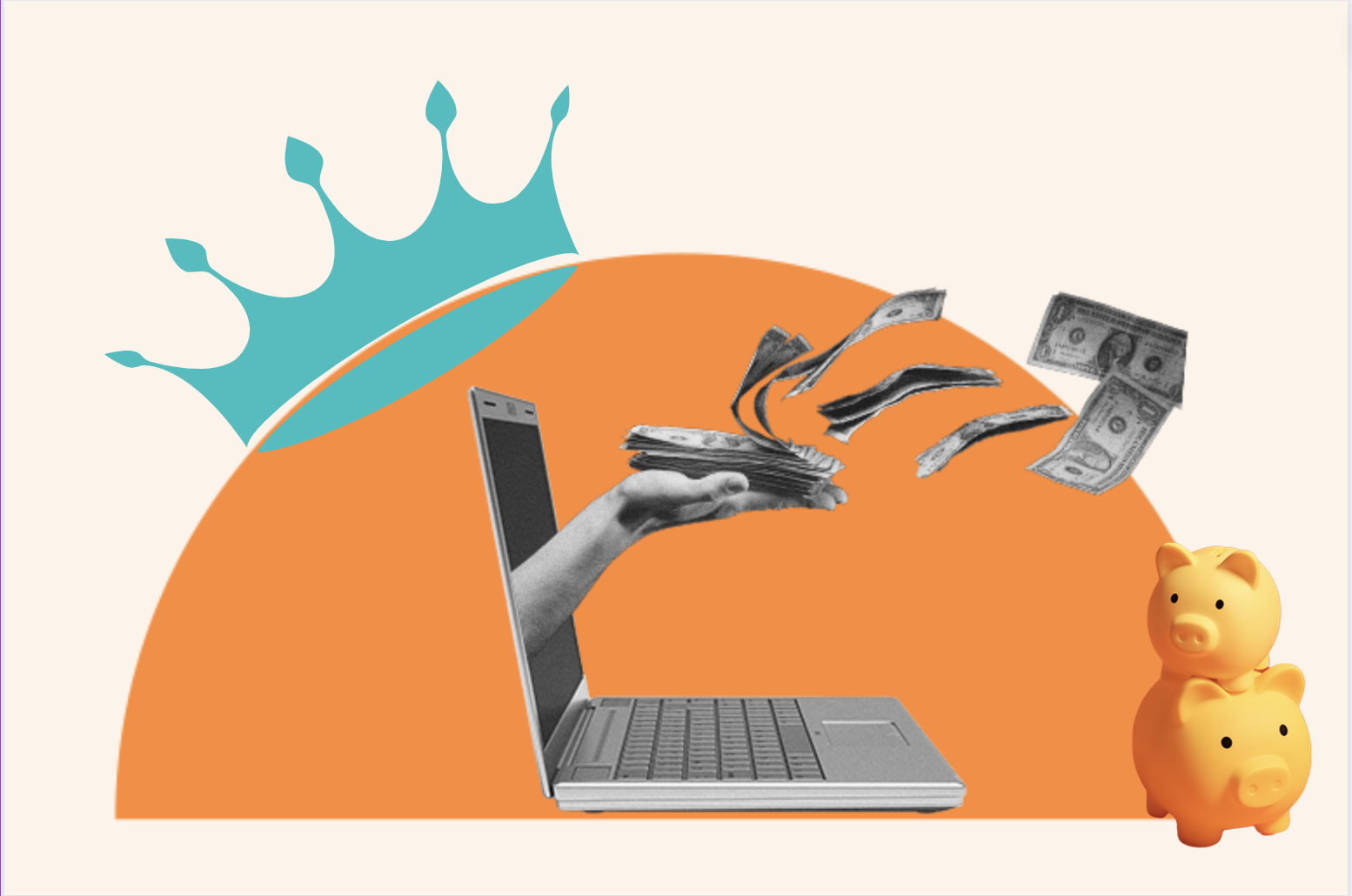My first call as a customer service rep was similar to my first time driving a car. Sure, I've seen other people do it and I've been in a car myself, but driving a car is much different than riding in one. While we got to our destination, there were plenty of unexpected stops and bumps along the way.
My customer service call was nearly the same. Yes, I solved the customer's problem, but I wouldn't say it was a delightful experience. I had to put the customer on hold, ask a coworker for confirmation, then fumbled over my explanation as I nervously tried to communicate the answer. While the customer got what they needed, there was plenty of room for improvement on my end.
Fortunately, I did improve — in both my driving and my customer service career. I learned what strategies worked and which ones were less effective. By avoiding the less effective ones and instead, focusing on what was working, I started to produce positive experiences more consistently.
In this post, I put together a list of some of the most ineffective customer retention strategies as well as some ideas for what your service reps can do instead.
Free Resource: Customer Churn Analysis Template
7 Ineffective Retention Strategies
1. Solving for Convenience Instead of the Customer's Needs
While you may know your company policy by heart, chances are your customers don't. Even if they did, they're more concerned about getting an answer than they are about following all of your company's rules.
In these situations, it's easy for customer service reps to lean on company policy as a quick out. While most customers will understand that you can't break your company's rules, that doesn't mean they're still happy with the experience. This friction is created because the customer thinks the rep and the business are working against them, even though in most cases company policies are put in place to benefit the customer.
What to Do Instead
While you certainly shouldn't break company policy — at least without special permission — you also shouldn't completely discard a customer's question just because it goes against policy. At the very least, you should see how much you can help the customer within the boundaries you're given.
This extra effort will go a long way in showing the customer that you genuinely care about their experience. You're not just giving them a simple "no" and sending them on their way. You're giving them a thoughtful explanation about why you're unable to help and providing them with options for moving forward.
2. Treating Customer Service as a Marketing Strategy
It's no surprise that companies with good customer service are more successful at retaining customers. However, customer service isn't a marketing or sales strategy, and it should be viewed as its own department at your business.
Sales and marketing teams attract leads, promote campaigns, and close deals. Customer service is all about helping customers and not expecting anything in return. If you start looking for returns on every service case, your customers will think your support team is trying to turn a profit rather than helping them solve problems.
What to Do Instead
Instead of focusing on customer retention and repeat sales, your team should prioritize customer needs first. Whenever someone calls your business or sends an email, your first step should be to assess what the customer wants and how you can help them fulfill that need. Once you do that, then you can tell them all you want about your loyalty programs, promotional discounts, or whatever campaigns your marketing and sales teams are working on.
3. Trying to Buy Customer Loyalty
This is a common trap that many customer service teams fall into. When you make a mistake, you try to buy back your customer's goodwill with gifts and discounts, thinking that will make up for their poor experience.
In reality, it takes about 12 positive experiences to make up for one poor one. So, you're 20% discount may not be enough to win back a frustrated or angry customer even though you're trying your best to make amends.
What to Do Instead
Rather than throwing money at the problem, a more effective strategy is personalizing your approach with each customer. Some may want that 20% discount, some may want to speak with a manager, others just may want to voice their feedback online.
Regardless of what it is, you shouldn't assume a gift or discount will solve the problem. After all, it's hard to place a monetary value on a customer's poor experience.
4. Focusing Too Much on Speed Instead of Quality
Every customer service team worries about speed, and for good reason, too. There are plenty of service metrics that measure response times and how long it takes for reps to answer customers. Most businesses will track how fast their reps are to respond and will work continuously to improve this metric.
What to Do Instead
While speed is important to customer service, it's not the only thing that customers are looking for. In fact, only 12% of Americans said that "lack of speed" is their biggest frustration with customer service teams while 27% of Americans said that "lack of effectiveness" was their biggest.
At the end of the day, good customer service will always prevail. Customers want fast answers, but they also want those answers to be correct. They might be happy at first if you give them a speedy solution, but they'll be even more upset if they find that solution doesn't work and they have to come back for more help. That extra five minutes that you spend checking your work can end up saving the customer a lot of time in the future.
5. Prioritizing Customer Acquisition Over Retention
In some cases, businesses won't give much thought to customer retention at all. Instead, they'll focus on acquiring new customers rather than retaining the ones they already have.
The problem with this approach is that it's much cheaper to retain a customer than it is to acquire a new one. In fact, it's 5-25 times more expensive to acquire new customers than it is to retain existing ones. Even if you have the best acquisition strategy in the world, you can always generate more revenue from your customer base if you keep people happy after you win over their business.
What to Do Instead
One of the most effective ways to retain customers is to prioritize customer success. A customer success team works with buyers to ensure everyone gets the most value out of your products and services. They make sure customers not only understand how to use your product but also why they need it to be successful.
This helps you guide customers toward positive experiences that eventually lead to repeat purchases. Once a customer achieves their goal while using your product, they'll want to replicate that success in the future. When they need to buy again, your brand will be the first they think of because you have a proven track record of success.
6. Providing the Same Service to Every Customer
Sometimes businesses will take a one-size-fits-all approach to customer service. This means they provide the same exact service to every person that reaches out to them.
The benefit of this strategy is that each customer is treated fairly. The downside is that it significantly limits your team's ability to deliver customer delight. If you treat every customer the exact same way, you can't personalize the interaction and create an experience that's unique for them. Sure, you may still solve the problem, but you won't generate the delight that makes customers want to come back to your business.
What to Do Instead
This is where a CRM can really come in handy. You can record important information about your customers and store it in your CRM for later use.
For example, let's say a customer requests that you only contact them in the afternoon. You can store this note in your CRM so the next time that the customer reaches out, the service rep who handles their case will know to only reach out in the afternoon. The customer doesn't have to repeat this request and will be happy to know that your company remembers their previous interaction.
Here's a real example that explains why personalization is important to customer retention.
7. Avoiding New Customer Service Channels
Phone and email are excellent channels for customer service, but they're not the only ones that customers are using. Live chat is becoming increasingly popular and social media sites like Facebook and Twitter are often leveraged for customer service, too. With all of these options now widely available, more customers are choosing channels that fit their immediate needs rather than just defaulting to the traditional mediums like phone and email.
What to Do Instead
You don't have to adopt every customer service channel available, but you do need to offer support on the ones that your customers are using most. Now that they have options, customers expect your brand to integrate its support services within the channels that they're using. They don't want to have to navigate away from what they're doing just because they have a quick question for your brand. They want to be able to ask their question from the same interface they're working on, then continue working after they're quickly provided with an answer.
To read about some successful customer retention trends, check out this list of customer loyalty statistics.
.png?width=112&height=112&name=Image%20Hackathon%20%E2%80%93%20Horizontal%20(26).png)


![7 Customer Acquisition Challenges You Might Face This Year [New Data]](https://www.hubspot.com/hubfs/customer%20acquisition%20%20%281%29.webp)




![Big Brands That Lost Customers' Satisfaction [Where CX Went Wrong + Data]](https://www.hubspot.com/hubfs/companies%20that%20lost%20customers_featured.png)


![How to Calculate Churn Rate in 5 Easy Steps [Definition + Formula]](https://knowledge.hubspot.com/hubfs/ai%20customer%20service%20predictions%20%283%29.webp)